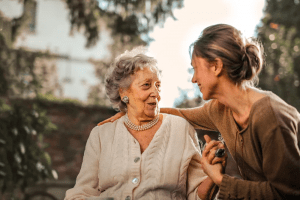Recent news and updates
Guest Blog:The Advantages Of Hiring A Home Care Consultant For Your Business
Hiring a home care consultant for your business can make a huge impact on the credibility
of the services you provide. Home care professionals are highly sought after by people who need help with caring for their aging loved ones. As a business owner, you can build authority as a home care provider and subject matter expert by collaborating with a consultant.
Of course, not just any consultant will work for your business and its home care goals. There are different skills you want to look for in the person that you hire. But the skills that you settle on will ultimately depend on your business size, the breadth of your services, and obviously, your bottom line. That’s why you’ll want to properly vet your potential home care consultants before you bring them onto your team.
In this article, we will cover the benefits of hiring a home care consultant for your business. We’ll also make sure you’re clear on what to look for in a candidate and their background. Read on
to discover how a home care consultant can positively impact your business and the home care services it provides.
You Decide What Background You’re Looking For
There is no one-size-fits-all background to look for when hiring a home care consultant. In fact,
It’s a common misconception that home care professionals need to all have extensive medical backgrounds. This is not at all the case, although some quality home care consultants may come from a health-related background.
If you want to take a deeper dive into your candidate’s background, you can get in touch with your local licensing board that certifies home care professionals. Many of these licensing boards, what they ask for from a person looking to become certified, and their criteria to meet change, based on what state you’re in.
Whatever your candidate’s background looks like, though, there are still some key things to look for above all else. These qualities will ultimately benefit your company and your clients’ experience with your services. Good communication, empathy, patience, and dedication — these are just a few attributes in a candidate that will make a huge impact on your clients. Interview your clients – multiple times, if you’d like – to make sure that they have these essential qualities.
You Can Build Relationships with Consultants
Simply put, it’s easier to build a relationship with someone on-one-one, rather than indirectly or through a third-party like home care staffing agencies. Home care consultants bring personal-level traits like loyalty and empathy, without the bureaucratic baggage and extra steps that you deal with when hiring through an agency. Building a relationship with a consultant early-on is a great way to get a sense of their experience and quality of service.
Once you’ve gotten to know a consultant well, it’ll be much easier to introduce them to your potential and existing clients. It’ll be obvious that you have a trusted relationship with your consultant when you can introduce them naturally while still providing a lot of detail about what they can offer.
Another advantage of working with an individual consultant is meting out more manageable pay. It tends to cost a lot more to hire home care consultants through an agency or other third party. Since you’re only negotiating pay and setting rates with one person, the time from sourcing candidates to hiring them is usually much quicker. Think carefully about how much you can budget for hiring home care professionals — chances are, a consultant will make much more sense for your business’s bottom line.
You Can Easily Evaluate Performance
The last thing that you want is for your home care services to suffer without you knowing about it. When you hire a home care consultant, it’s much easier to evaluate their performance and track their growth than it is when working with an agency. With a home care consultant, you can coordinate a performance tracker with them to make sure they know how to satisfy your business needs.
You can start this process during the hiring phase when you outline with your consultant what your requirements for their performance are. After your consultant understands what your business needs are and what your clients expect from them, they can closely work with you to make sure they’re meeting your expectations. Remember, if you’re not clear with your consultant about what’s required of them early on, they’ll struggle to meet your performance standards.
A huge benefit to setting a one-on-one performance plan and schedule with a consultant is reducing your risk of time lost. It’s much more difficult to plan performance expectations through an agency, evaluate them as having met your standards, and confirm with the person being cared for that they’re satisfied. With a consultant, your business doesn’t risk wasted time, effort, and money on a home care professional that isn’t on the same page as you.
It Helps Make a Name For Your Business and its Services
Hiring a home care consultant of your own simply gives your business more credibility than hiring through an agency. When you work with a consultant, you directly coordinate the way they behave with your client, which means you’re responsible for determining what your client needs are, and making sure they’re met one-hundred percent of the time. If you go with the agency route, you’ll never be sure that you’ll have the same caregiver for any real length of time, which hurts your clients’ overall experience.
Go with a home care consultant to increase your chances of having someone reliable who can stick around for the long haul. All too often, hiring through an agency means you’ll get a rotating door of individuals with varying levels of experience and skills.
A home care consultant with whom you build up trust and a relationship will make a world of difference in the quality of care your business offers in the longer-term. Your clients will recognize your business as a reliable source of expertise, rather than an outsourcing agency that doesn’t understand what its clients really want from their home care.






